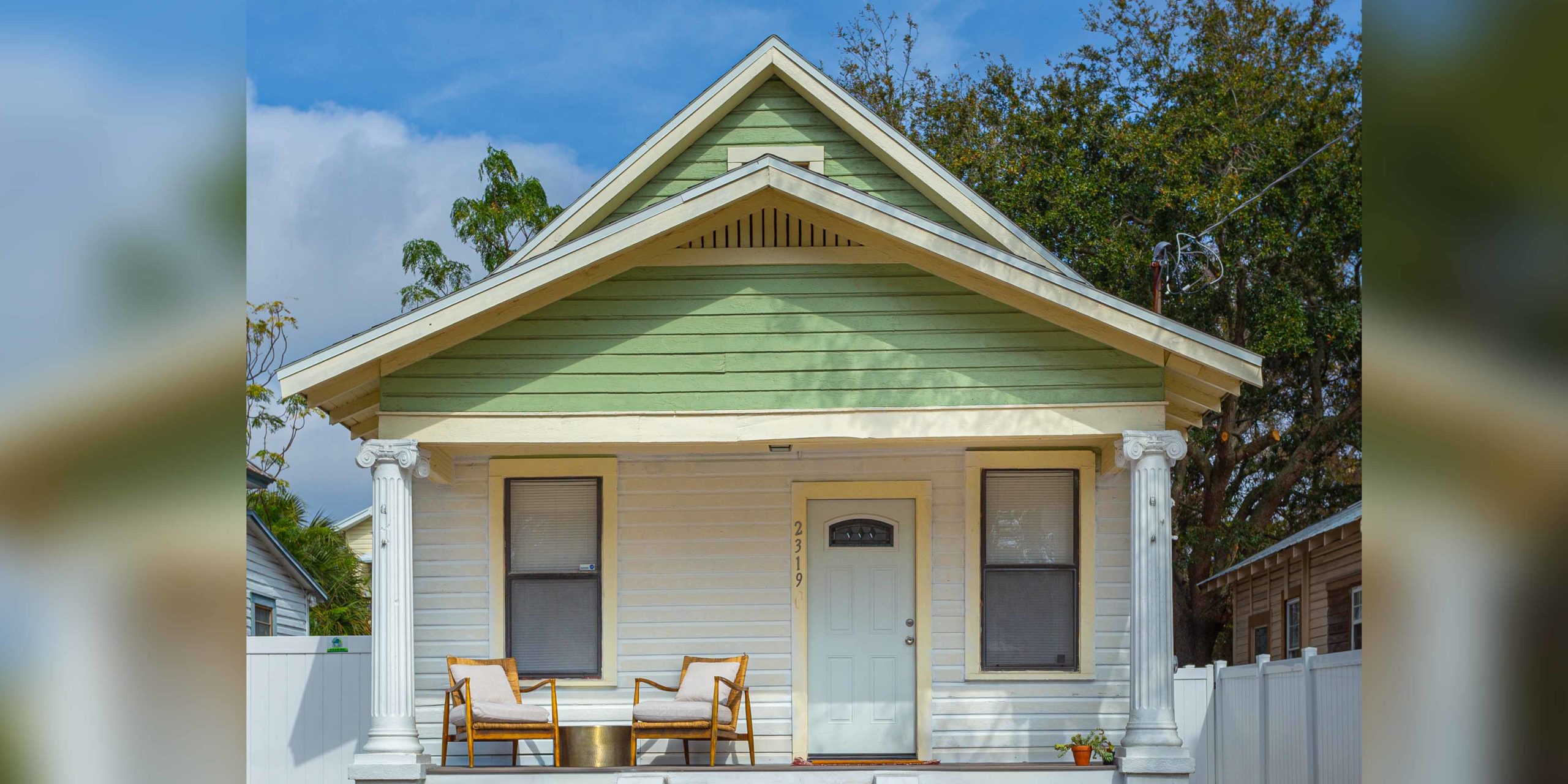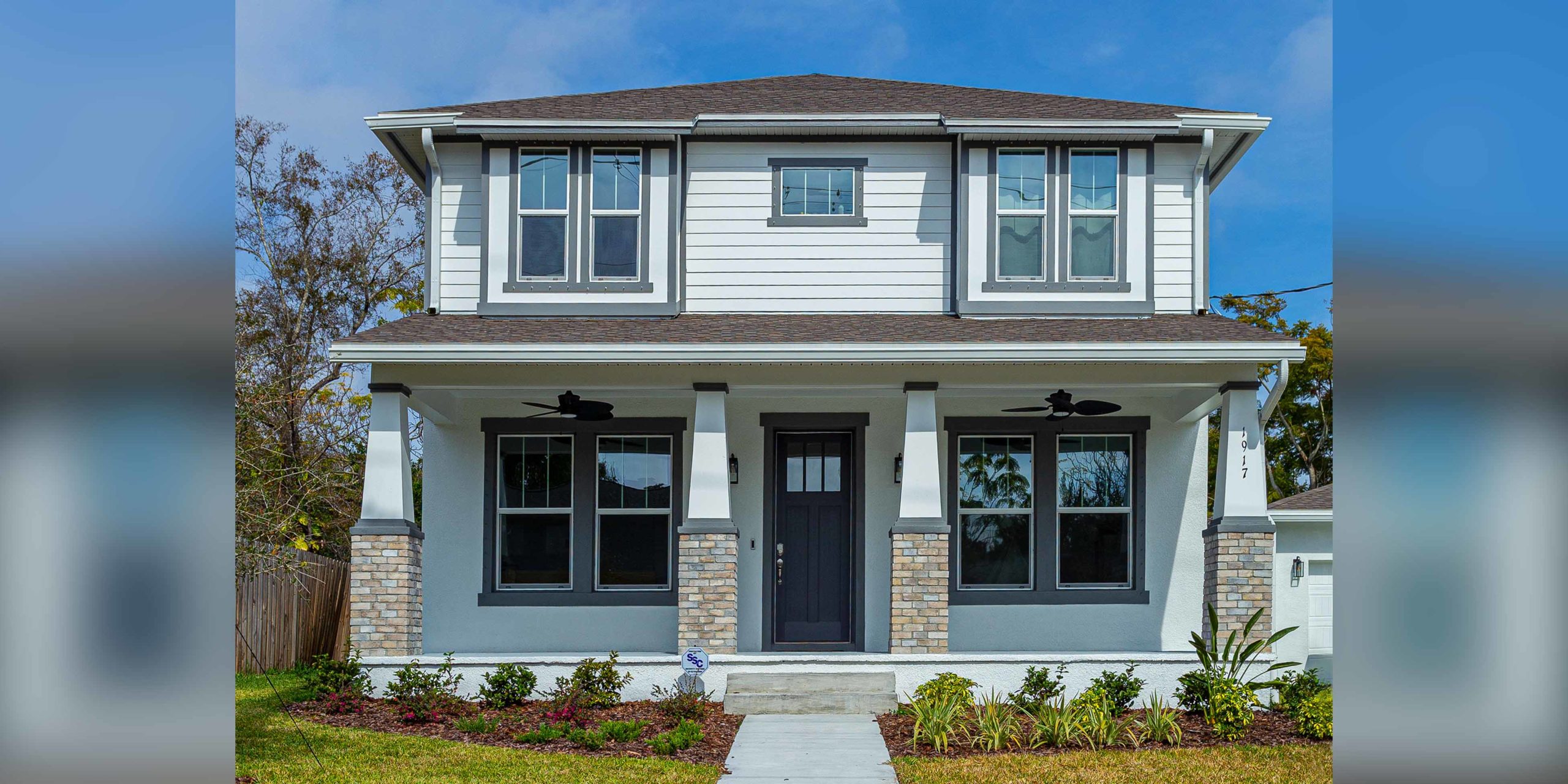If the walls in West Tampa’s homes could talk, they’d have some stories to tell. With homes still standing that date back close to 120 years, it’s the perfect place for homeowners who are looking for charm and character. “When you find a West Tampa home that you like, whether you decide to restore an old-school bungalow or you decide that you want to tear down and build new, you’re actually a part of history,” says Aminta Goynes, Realtor and founder of The Goynes Group at Coldwell Banker Realty. But in addition to the glass doorknobs, original penny tile flooring and clawfoot tubs that you’ll find in many of these homes, you’re also a quick trip from some of Tampa’s biggest new developments, from Armature Works and the Heights district to the east to Midtown a little northwest.
“There’s a buzz about the West Tampa area and the West Tampa historic district,” Goynes says. “West Tampa is going to become a place where everybody will want to be.” Read on for four homes that best define the West Tampa neighborhood.
01. 2513 W. CHERRY ST.
Goynes estimates that roughly half of new homeowners in West Tampa are buying and renovating or restoring, while the other half are tearing down properties that can’t withstand a remodel. But, she notes, builders are showing a “reverence” for the neighborhood’s history in their designs. “They’re mixing the old and the new, but they’re trying to help in their own way to preserve the character of the West Tampa neighborhood.” The builders of this home clearly took inspiration from their surroundings, incorporating a bungalow look with a more updated craftsman-style column and a much larger footprint than the original homes; with three bedrooms and two-and-a-half bathrooms, this 2018 build is 1,857 square feet.

02. 2319 W. PINE ST.
Historic West Tampa is known for its wood-frame bungalows with distinctive columns on either side of the front porch. “Some people think that all columns are created equally, but they’re not,” Goynes says. This home, built in 1903, features ionic columns, which curl up at the top where they meet the roof and are reminiscent of Greek or Roman architecture. Like many of the homes built around the turn of the 20th century, this home also has double-hung sash windows throughout. It’s also, by modern standards, tiny — just over 800 square feet. “It was very common at that time for the homes to be much smaller [than homes built later in the century],” Goynes explains. “They almost mimic the row houses that were built early on in Ybor City to attract the cigar workers and their families.”

03. 1917 W. GRACE ST.
This home is inspired by the 1920s-style West Tampa bungalow. On those structures, porches became much broader, and doric columns were introduced. These columns are round and flat at the top to support the expansive space at the front of the house. Like the Cherry Street house, this Grace Street property blends original West Tampa with more modern features. “What you have is more of a craftsman-style home and a few elements of that bungalow, one of those being that porch,” Goynes explains. She says homeowners looking to buy in West Tampa are looking to restore or replicate those unique, original features as much as possible. “They have an affinity for old-school charm,” Goynes adds. “We’re not dealing with the cookie-cutter personality type. They’re very specific in what they want when they purchase these homes.”

04. 3216 N. ROME AVE.
Beyond the historic district, West Tampa’s architecture changes subtly in areas like Macfarlane Park to the northwest and the west river, along the Hillsborough. Here, homes like this one take on more of a midcentury look. Goynes says these areas are perfect for homeowners who crave variety in their architecture but still want the amenities of West Tampa and proximity to the urban core. She has buyers coming from all over the country and even from other parts of Tampa looking to get closer to the growth happening around downtown. They’re all part of why West Tampa is starting a new chapter. “I feel that West Tampa is taking on a different shape and a different kind of identity,” Goynes says. “We have people coming in from other cities and states, and they want to be part of this expansion. … While other areas are experiencing some stagnation right now, Tampa is bustling. Tampa is thriving. We have a vibrant city, so we welcome those who want to come with open arms.”



